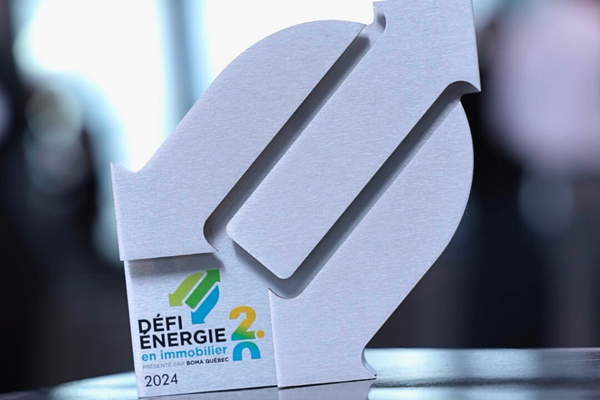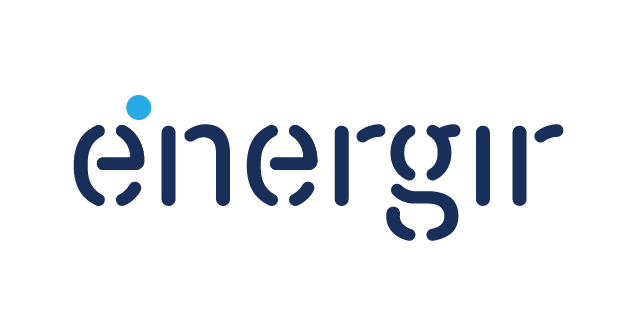Most commercial and institutional buildings have an electricity consumption profile that allows them to take advantage of electric heating during off-peak hours. That applies especially in the evening and at night, when major energy consumers such as mechanical systems, computers and lighting are off or at reduced power. Let’s take a look at the figures.
Gigajoule (GJ) Costs of Off-Peak Electric Heating
The Hydro-Québec M Rate (for medium-power customers) includes a kilowatt hours (kWh) amount for energy consumption during the one-month billing period, plus a kilowatt amount for billing demand.
For the year beginning April 1, 2018, the amount for power consumed is $14.46/kW and two different kWh prices apply, depending on the volume of energy consumed:
- 99¢/kWh for the first 210,000 kWh per month;
- 70¢/kWh for additional consumption beyond that.
Energy billed as additional electricity (high kW demand) is calculated in 15-minutes blocks. It is thus very worthwhile to manage demand and keep it as constant as possible. Off-peak electric heating allows you to apportion power demand so as to obtain maximum kWh for the same kW demand.
The off-peak rate applies to consumption of electricity that does not create an increase in demand.
Given that 1 kWh = 0.0036 GJ and that standard electric heating provides an output of 100%, 1 kWh of electricity provides 0.0036 GJ of heat.
The cost of off-peak electric heating is thus:
- $13.86/GJ for monthly electricity consumption of less than 210,000 kWh;
- $10.28/GJ for monthly electricity consumption of more than 210,000 kWh.
GJ Cost of Natural Gas Heating
A cubic meter (m3) of natural gas generates 0.03789 GJ. Given that the average efficiency rating of a furnace in Quebec is 85[*]%, 1 m3 of natural gas provides 0.03221 GJ of heat.
According to data provided by Énergir, the marginal GJ cost (excluding fixed monthly costs) of heating with natural gas is

Marginal cost of heating with natural gas vs. Electric heating in off-peak hours at the M Rate

Conclusion
- For consumers who use less than 210,000 kWh per month, heating with natural gas is 1.1 to 22.5% cheaper than electric heating at the off-peak rate.
- For consumers who use more than 210,000 kWh per month, the cost of natural gas heating is 4.5 to 33.3% more expensive than electric heating at the off-peak rate.
Discussion
For consumers using more than 210,000 kWh per month, not only is electric heating at the off-peak rate very economical, but it also considerably reduces greenhouse gas emissions. Using heat storage units, a technology that is very simple and reliable, allows the consumer to maximize the rate advantage and to heat the building during peak hours with the heat that is produced during off-peak hours.
Studies have been conducted based on the premise of standard electric heating (boilers, furnaces, baseboard heaters, forced air heaters, etc.). Aerothermal and geothermal heat systems have energy outputs of 200 to 300%, and thus lower heating costs. For example, a geothermal heat pump system with a coefficient of performance (CoP) of 3, will have an off-peak heating cost of:
- $4.62/GJ for monthly electricity consumption of less than 210,000 kWh;
- $3.43/GJ for monthly electricity consumption of more than 210,000 kWh.
It is best to adapt the calculations to each building, based on the measured performance of heating equipment (gas furnaces, heat pumps, etc.), and on real rates for gas and electricity. In order to optimize the benefits of off-peak electricity rates, avoid creating high demand during peak hours. Quantify the available off-peak energy potential (without additional power demand) and compare it with the analysis of energy needs for off-peak electric heating.
Governmental commitment to energy efficiency in the form of implementing changes in state-owned institutional buildings places renewable energy at the very heart of heating strategies. The primary motivation is to lead the way toward a much needed massive reduction in greenhouse gas emissions (GHG). However, in order to reconcile the cost factor in the context of existing rates, a combination of renewable energy sources and fossil fuel energy is duly acknowledged. Often little-known or underestimated, the benefits of that combination can be considerable in terms of savings.
Stéphan Gagnon, Eng., CEM, LEED GA
Coordinator of the technical support service, Partnerships Branch
Transition énergétique Québec
Member of the Technical Committee of the Building Energy Challenge.
With the participation of Énergir and Hydro-Québec.
[*] Approved rates by Régie de l’énergie http://www.hydroquebec.com/affaires/espace-clients/tarifs/tarif-m-general-clientele-moyenne-puissance.html
[*]Énergir








